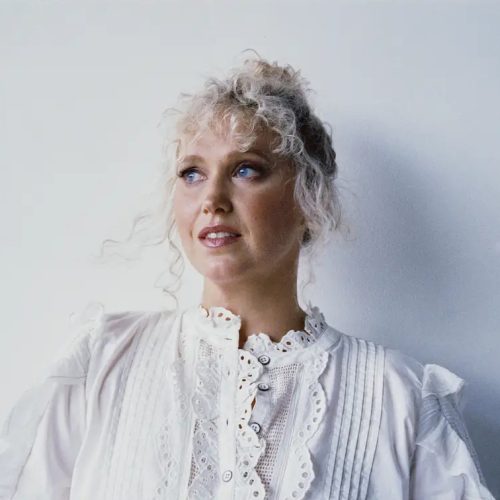Who publishes an album cover that’s a picture of herself with the word “Hypocrite” after her name?
A brave soul; her name is Stephanie Lambring.
Before getting into her song, “Cover Girl,” I want to talk about the album cover.
She’s mostly in shadow, but light reaches out to her face (and one lace-covered elbow). The face is the clearest and most detailed thing in the picture, so our eyes look there for information. She’s smiling, and looking toward something we can’t see. We have reason to hope she’s friendly, and might know something we don’t. We also see her name, and the word hypocrite. It seems she’s telling us she’s a liar.
But if she tells us so, does that make her honest?
Stephanie Lambring wrote songs for other singers for five years before releasing her first album in her own voice (2020’s Autonomy.) Hypocrite is her second album. The easy story to tell about this is that for five years she was contractually insincere, and now, free from Music Row, she can tell her truth.
But the opening song “Cover Girl” tells a more interesting story.
It challenges the listener to question how much truth they actually care to stomach. She writes:
Beauty’s on the inside
Under a picture of her good side
Lambring’s efficient writing sets up the central tension of the song in these first two lines. The character is someone who puts herself on as a performance – a one-woman show about not caring what people think of you. The problem is evident: if she really meant what she said, there would be no need for the picture.
Lambring’s training and experience show in the teamwork between lyrics and music in this song. All instruments but the drums drop out as the character “watches on standby,” waiting for a reply. We hold our breath, waiting for the return of the bass, as she waits breathless for someone to tell her she’s pretty. The synthetic texture of the instruments constructs a digital-feeling world. Doubled and redoubled vocal harmonies on the chorus surround Lambring’s voice in a hall of mirrors, a sonic enactment of the performance and self-judgement described in the song.
The voice of the song takes the perspective neither of the author nor of a character – the narrative issues from a third, disembodied, fearlessly anonymous perspective. We follow the cover girl behind the scenes, seeing both the mask she presents and the face she hides.
But Lambring also plants us in the online crowd that is the audience for this performance. “We” tell her what she wants to hear. But we also plead, “We don’t have to believe it, do we?” Lambring leaves it to the listener to decide what it is we don’t want to believe. The cover girl is “being real about her fakeness” – but is it the real face or the fakeness we can’t stand?







